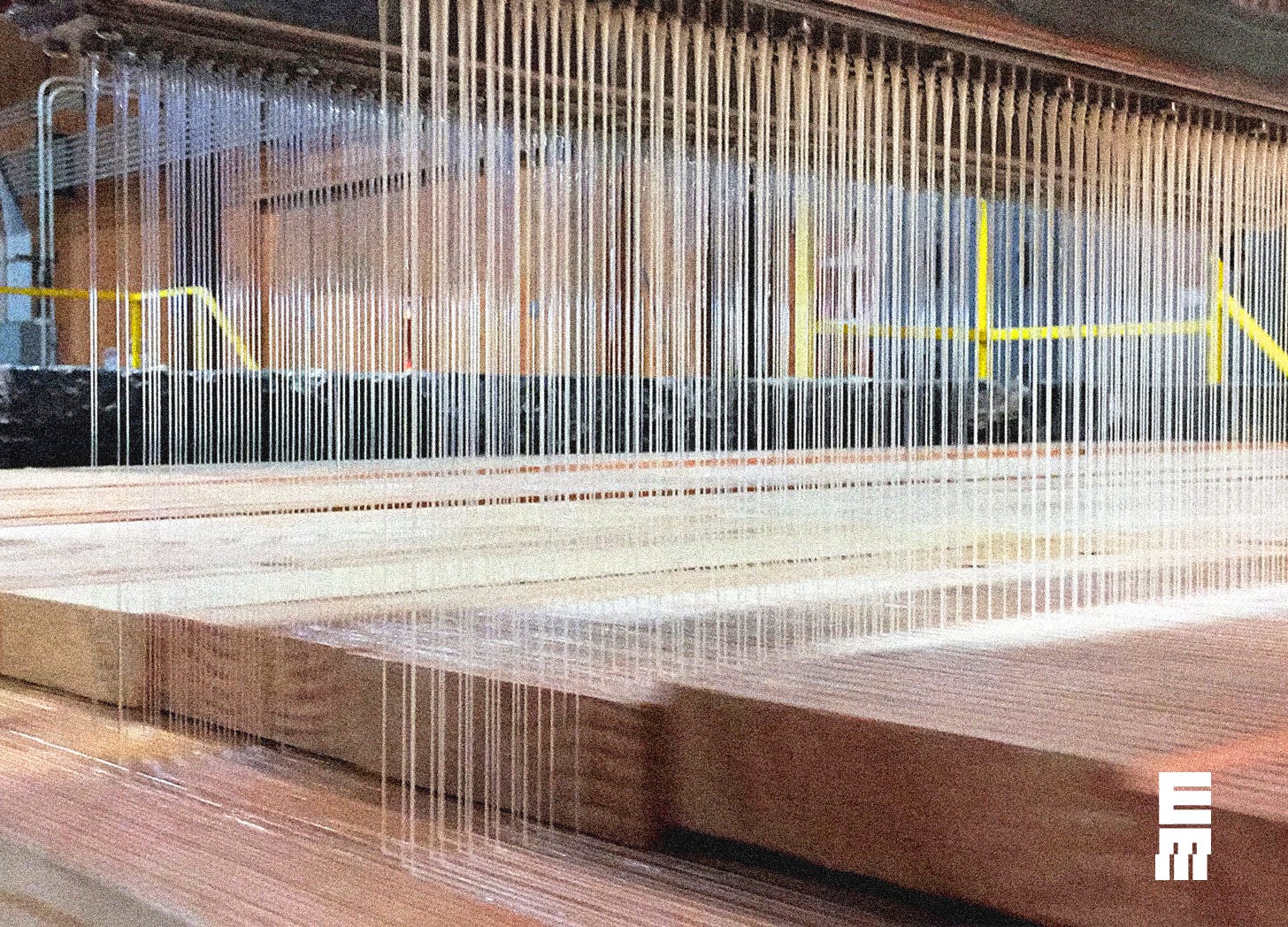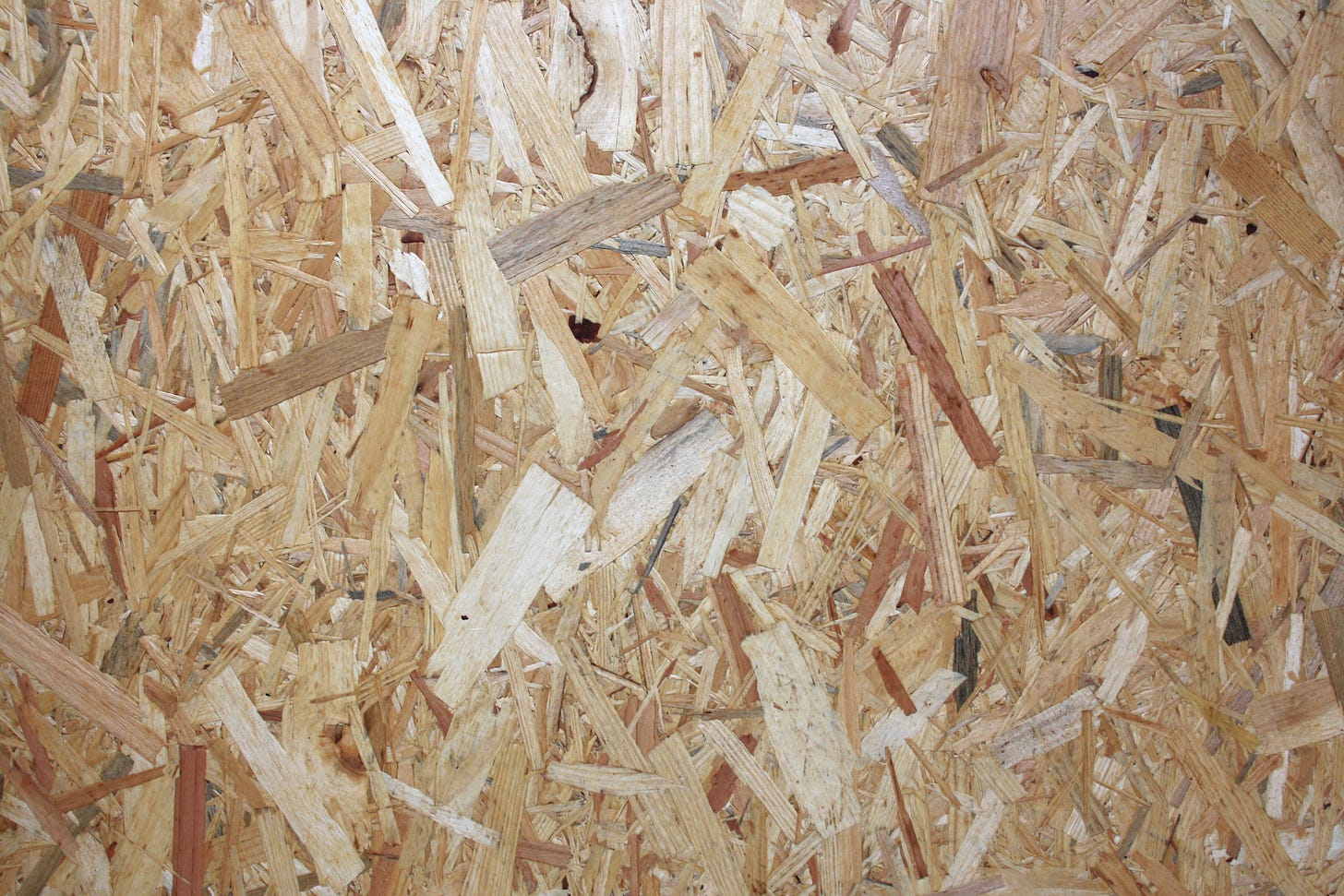Welcome to the first Emergetic of 2023!
Over the holidays, I, like all of you, was thinking about wood. For years now I have been fascinated by engineered wood products (EWPs) and their innovative potential in architecture. All EWPs rely on the simple idea that the whole can be greater than the sum of its parts. Small or imperfect wood pieces can be combined to create strong structural composites - capable of sheathing a house or constructing a skyscraper. Meaning we no longer need to rely on old growth forests to build with wood at scale.
Over my time researching, I have repeatedly come across concerns for the adhesives that some EWPs rely on. Whether it is an environmental or health-based worry, the glue seems to be an issue. This week I explored the “L” in CLT, and dove into the stuff that binds our timber together.
The Glue
We rely on a collection of chemical glues to hold together our wood products. The most popular adhesive used for CLT is polyurethane (PUR). This fossil-based glue cures at room temp, contains no formaldehyde, and has a low risk of off-gassing once properly dry. Polyurethane is already common across many existing industries: spray paints, lacquers, foam production, etc. Other, more problematic, adhesives used in CLT (PRF and MUF) do contain formaldehyde. The proportion of glue in CLT is less than 1 percent.
While nearly all of CLT is a regenerative material (wood), that important one percent remains dependent on non-renewable resources. PUR is a potential carcinogen in its uncured form and, although laminated mass timber products are healthy when dried, these chemicals still surround us when we build with engineered wood. Additionally, petroleum-based adhesives are subject to the price fluctuations of oil markets - contributing to volatile pricing in mass timber products. Adhesives with formaldehyde can increase health risks, although technological advances have created melamine glues with emission rates equal to the wood itself.
If we would like to move toward relying on renewable, healthy building materials, we need to address the sticky stuff in the seams.
Bio Alternatives
Mojgan Nejad, of Michigan State University, is one researcher who is taking aim at disrupting our current adhesive practices. She has found viable replacements for phenol resins with a lignin-based adhesive.
Lignin is nature’s glue, helping to hold together a plant’s cellulose fibers. It is an organic polymer and key structural material at the cellular level. Lignin exists in all terrestrial plants and is the second most abundant polymer in the world behind cellulose. The paper and pulp industries are huge producers of lignin as a waste product, since the presence of lignin affects paper quality. Most of the excess lignin is burned for fuel.
Previous researchers have only been able to replace half of phenol adhesives in wood products with bio-alternatives. Mojgan said they were looking in the wrong places. Her team discovered that lignin derived from corn stover (everything left over from a harvest) was capable of fully replacing oil-based glues. Their research has successfully created oriented strand board (OSB), plywood, and laminated veneer lumber (LVLs) using this abundant, natural byproduct of agriculture.
Future testing will show if a lignin glue could be applicable for mass timber use and / or reveal alternate sources of lignin. Though, the jump to mass timber is not necessary for innovations like this to be revolutionary.
CLT is not always a practical construction material in all regions when the costs (environmental and economical) of transportation, industry, climate, and silviculture are considered. In some of these instances, wood products like OSB and plywood are much more aligned with the local forest profiles - since they can be made from low-grade lumber. The standard adhesives in these industries are a serious inhibitor to their application as a viable mass timber-esque structural product. A healthier glue could unlock vast potential for innovation in wood design far beyond just shipping CLT sheets across the globe.
A Sticky Situation
The adhesives used in some EWPs can be a cause for concern, though it shouldn’t hold us back from embracing mass timber where appropriate. Mass timber’s benefits far outweigh the concerns of its glue. Even though the cured adhesives of CLT are safe, we are still relying on non-renewable and potentially toxic chemicals to create our healthiest wall systems. This concern is fueling research on bio-based alternatives which could unlock entirely new industries of wood design. This is the future I would like to see.
Next week I will highlight some innovations in glue-less timber construction - manufactures and designers committed to creating the healthiest buildings possible.
Keep it together,
Tom






